Though Scotland cannot
claim to have originated a new and distinctive style of architecture,
yet it can show a continuous series of ecclesiastical buildings,
beginning with the simplest and rudest of monkish cells, extending
through all the periods of mediaeval art. Of church architecture,
however, as we now understand it, there was none during the first seven
centuries. It really began about the tenth century, when the round
towers first appeared.
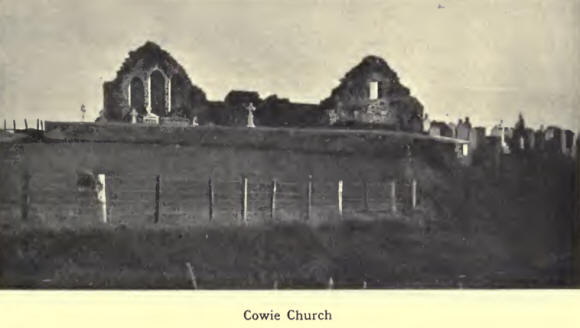
Of ecclesiastical
buildings now in ruins Kincardineshire has some very interesting
examples. Cowie Church, or more correctly the Chapel of St Mary,
picturesquely situated a little north of Stonehaven Bay, is an example
of a simple oblong structure in the first pointed style. There arc three
fine lancet-pointed windows of the thirteenth century in the cast gable,
with a square window in the west. The chapel was consecrated in 1276,
and was unroofed by ecclesiastical authority shortly before the
Reformation on account of scandals.
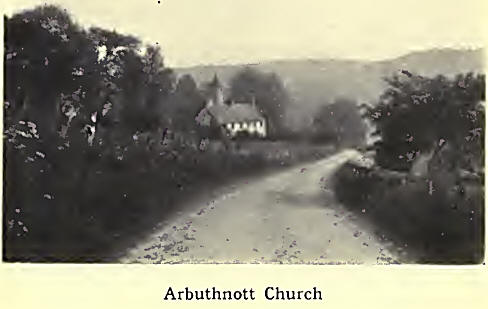
At the Kil'ktown of
Fetteresso the roofless ruins of the old church of Fetteresso stand upon
a knoll which is one of the oldest ecclesiastical sites in the Mearns. •
The ancient church was dedicated to a Celtic saint of the sixth century
named Caran. The pointed doorway on the north side and parts of the
adjacent walls belonged to the church which was consecrated by David de
Bernham, Bishop of St Andrews, in 1246. Its belfry is a good example of
the belfries to be seen in the north-east of Scotland.
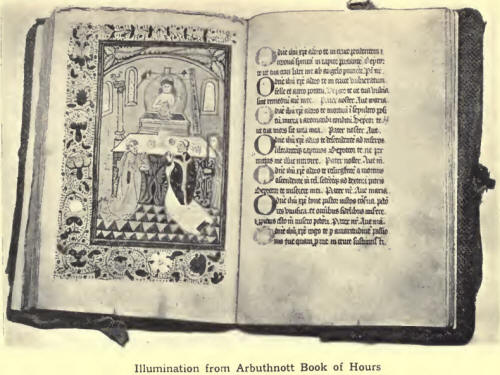
The ruined church of St
Fittick, about a mile southeast of Aberdeen, stands on the site of an
early church which was granted by William the Lyon to his favourite
Abbey of Arbroath, and remained attached to it till the Reformation.
The parish church of Arbuthnott, dedicated to St Ternan, is undoubtedly
the most interesting piece of ecclesiastical architecture in
Kincardineshire. One of the few existing pre-Refonnation churches in the
north of Scotland, it was consecrated in 1242 by David de Bernham,
Bishop of St Andrews. It is long and narrow, consisting of an aisleless
nave and chancel, and what is known as the Arbuthnott aisle, which
projects from the south side of the chancel. The Arbuthnott aisle—the
most striking feature of the exterior—was built in 1505, the west gable
of the nave with the circular bell-turret being added at the same time.
The aisle is in two stories, the lower a vaulted chapel with an apsidal
termination to the south. Within the apse lies a monumental effigy,
probably that of James Arbuthnott, who died in 1521. On the side of the
base are four shields, bearing the names of Stuart, Arbuthnott, and
Douglas. The chancel is sharply pointed. Three fine stained-glass
windows adorn the east gable of the chancel. The church was skilfully
restored in 1890, after being accidently burned the previous year. About
1475 the vicar of the parish, James Sibbald, produced three
service-books, to which the name of Arbuthnott is attached—a Missal, a
Book of Hours, and a Psalter.
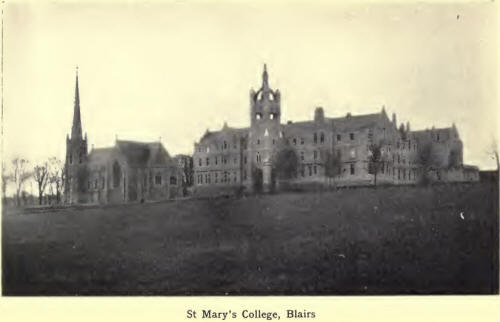
Another interesting
church, which originally dates from the thirteenth century, is that of
Kinneff. The present church, which has suffered from various
restorations, has in the east gable a small Norman window, and five
Gothic windows in the south wall. The historical interest of the church
is even greater than its architectural interest. For it contains several
mural monuments, one to Rev. James Granger and his wife Christian
Fletcher, who preserved the “honours” of Scotland.
The parish church of Fordoun, a prominent object in the landscape, with
its handsome square Gothic tower, nearly 100 ft. high, was erected in
1830, and is the successor of a very old church, which was demolished in
1787. Beside it is the small chapel of St Palladius, a modern
restoration; but the traditions regarding this saint and his connection
with the place as exemplified in chapel, well, and annual fair which
bear his name, go back to the fifth century. Within the chapel is a
sculptured stone which, according to Professor Stuart, is intended to
commemorate the death of Kenneth III.
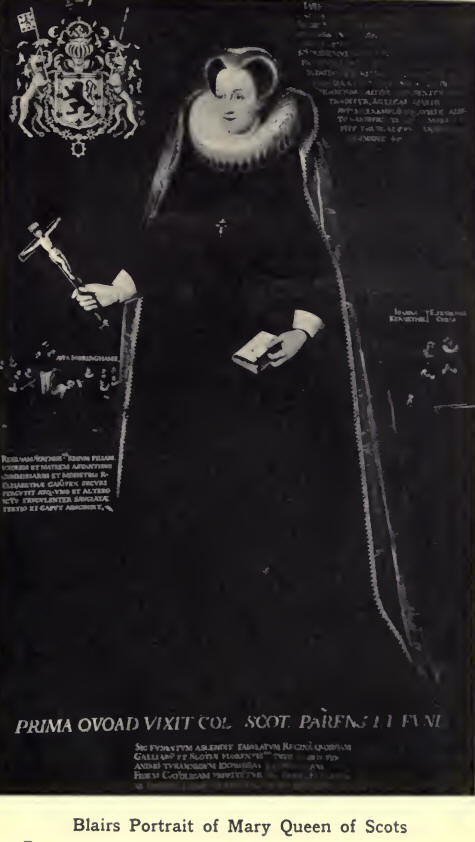
At Blairs, in Maryculter
parish, the Roman Catholic College of St Mary stands conspicuous on a
slope overlooking the valley of the Dee. The estate of Blairs was once
the property of the Knights Templars. The college possesses a famous
portrait of Mary Queen of Scots—an excellent likeness. It may have been
painted from a miniature given by Mary on the morning of her execution,
to Elizabeth Curie, one of her attendants, who bequeathed miniature and
portrait to the Scots College at Douai. In the days of the French
Revolution the portrait lay hid in a chimney to save it from the fury of
the mob. In the background of the picture, left, there is a sketch of
the execution; and, right, Elizabeth Curie appears.
|

